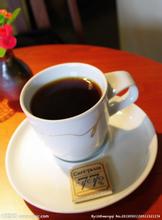Introduction of coffee beans from Arusha Coffee Farm in Tanzania
Corn: mainly cultivated by small farmers, the main planting areas include Arusha, Dorma, Iringa, Mbeya, Ruqua and Rovuma. Production rarely exceeds 3 million tons. Unfavorable climatic conditions are said to be the reason for the low yield.
Rice: mainly grown by small farmers, there are also several large-scale rice farms of the National Agriculture and Food Corporation (NAFCO). Large-scale cultivation depends mostly on modern irrigation facilities, while small-scale cultivation depends entirely on natural rainfall or traditional irrigation. The national annual output of rice is 60-700000 tons. The main planting areas are Shinyanga, Mwanza, Morogoro, Mbeya and Tabora.
Wheat: the national average annual output of wheat is 70, 000 tons, and the largest wheat production unit is the HANNANG wheat complex, which is composed of several farms with a total planting area of 4000 hectares. These farms are located in the Hannang district of Arusha and are all autonomous subsidiaries of NAFCO. In the 1970s, NAFCO developed and operated these farms with the help of the Canadian International Development Agency (CIDA), and CIDA's assistance to NAFCO ended in 1993. In addition to these farms in NAFCO, a number of large private farms in Arusha, Iringa and Kilimanjaro provinces also produce rice. In addition, some small farmers also produce wheat as rations.
Sugarcane is mainly grown by four large plantation companies, namely Kilombero Sugarcane Company, Mtibwa Sugarcane Plantation, Tanganyika planting Company and Kagera Sugarcane Co., Ltd. In addition, there are some foreign investors growing sugar cane in Kilombero and Mtibwa. The annual output of sugar in China is about 115000 tons, while the annual demand is 300000 tons, and more than 200,000 tons need to be imported every year.
Cassava: like corn, it can be grown in most parts of the country. The main planting areas are Mtwara, Lindi, Coastal Province, Dar es Salaam, Shinyanga, Tabora, Mwanza, Rukwa, Kagera, Kigoma and Mara. Cassava is one of the staple crops in Mwanza, Shinyanga, Tabora, and Mara provinces.
Sorghum: as a drought-tolerant crop, it can be planted in almost every province in the country, with traditional varieties and improved varieties (such as SERENA and LULU). The common planting areas are Dodoma, Singida, Tabora, Shinyanga, Mwanza and Mara provinces.
Millet: one of the drought-tolerant crops, mainly grown in Dodoma, Singida, Shinyanga, Mtwara, Lindi, Rukwa and Mara provinces. The main types are Bulrush corn and Finger corn. Except for some areas as staple food crops, most of them are used as raw materials for local beer production.
Coffee: is one of the traditional export crops, can grow in all parts of the country, the planting area has more than doubled in the past 20 years, but the annual output has always hovered around 50,000 tons. The main reasons why it is difficult to increase the yield are the aging of trees, the decrease of input, the increase of diseases, the increase of production cost and low market return. The provinces that grow Mild Arabica coffee are Kilimanjaro, Arusha, Mbeya and Ruvuma;, and the provinces that grow Robusta coffee are mainly Bukoba provinces; the provinces that grow Hard Arabica coffee are mainly Kigoma and Morogoro provinces. The centralized management department of the industry is the Tanzania Coffee Agency.

Important Notice :
前街咖啡 FrontStreet Coffee has moved to new addredd:
FrontStreet Coffee Address: 315,Donghua East Road,GuangZhou
Tel:020 38364473
- Prev

Introduction of fine coffee from Rwanda coffee beans grown in bourbon by washing
The coffee fruit needs to be transported to the processing plant as soon as possible after picking, but due to the lack of domestic facilities, it is unable to deal with the fruit at the first time. The fruits are piled up after being picked, which will continue to develop and accelerate mildew and decay due to lack of ventilation. Rotten fruits will affect the quality of coffee and show defective flavor. In recent years, Rwanda has developed in the production and processing of coffee.
- Next

Caesar in the Borquat region of Panama. Louis Panamanian Pocket Flower Butterfly Coffee beans
[Origin]: Panama [producing area]: located on the slopes of Mount Baru, the highest peak in western Panama [Manor]: Esmeralda (Emerald Manor) / Hacienda La Esmeralda [Grade]: SHB [growth altitude]: 1450m [treatment]: fine washing treatment [Special Certification]: green Rainforest Certification [Baking degree]: shallow Baking city- [Wind]
Related
- Does Rose Summer choose Blue, Green or Red? Detailed explanation of Rose Summer Coffee plots and Classification in Panamanian Jade Manor
- What is the difference between the origin, producing area, processing plant, cooperative and manor of coffee beans?
- How fine does the espresso powder fit? how to grind the espresso?
- Sca coffee roasting degree color card coffee roasting degree 8 roasting color values what do you mean?
- The practice of lattes: how to make lattes at home
- Introduction to Indonesian Fine Coffee beans-- Java Coffee producing area of Indonesian Arabica Coffee
- How much will the flavor of light and medium roasted rose summer be expressed? What baking level is rose summer suitable for?
- Introduction to the characteristics of washing, sun-drying or wet-planing coffee commonly used in Mantenin, Indonesia
- Price characteristics of Arabica Coffee Bean Starbucks introduction to Manning Coffee Bean Taste producing area Variety Manor
- What is the authentic Yega flavor? What are the flavor characteristics of the really excellent Yejasuffi coffee beans?

